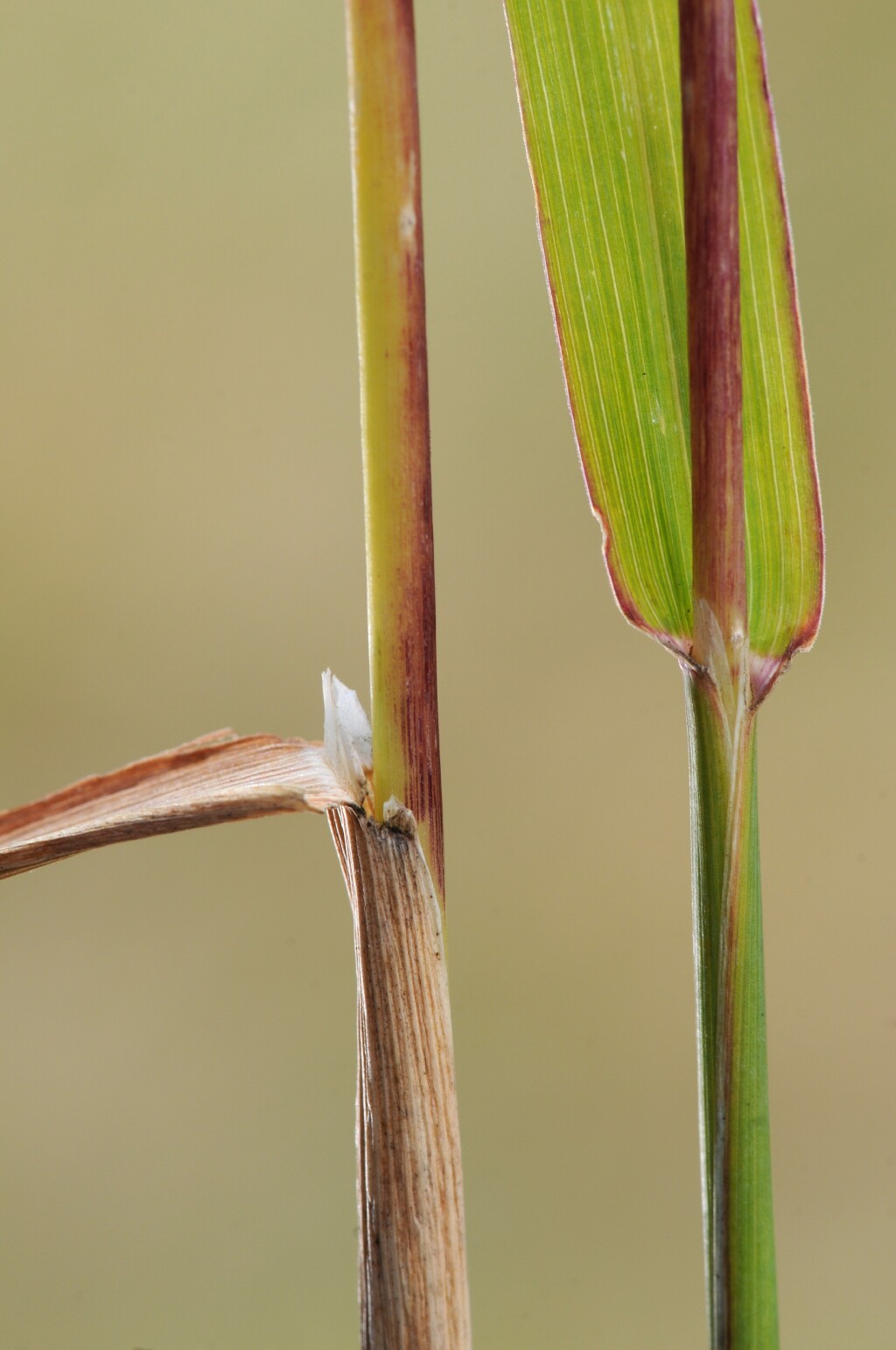Phleum pratense
L. Timothy GrassTufted perennial, culms erect, basal internodes often bulbous, to 1.5 m high. Leaves glabrous, finely scabrous; blade narrowly pointed, to 20 cm long and 8 mm wide; ligule obtuse, 1.5–5 mm long. Inflorescence a cylindric panicle, 4–15 cm long, 5–10 mm wide; glumes oblong, 3–4 mm long (excluding awns), with a row of coarse, erect bristles along the thickened keel, awns rigid, 1–2 mm long, erect to slightly recurved, lower glume ciliate along margin; lemma 5-nerved, shallowly toothed at apex, 2–3 mm long, minutely pubescent; palea 2-nerved, slightly shorter than lemma. Flowers Jan.–Mar.
VVP, GipP, OtP, WaP, CVU, EGL, HSF, HNF, Strz, VAlp. Also naturalised WA, SA, NSW, ACT, Tas. Native to northern Africa, temperate Asia, parts of tropical Asia (India, Pakistan), and Europe. Principally a pasture grass in cooler localities, occasionally becoming established on disturbed ground nearby. Planted as a soil stabiliser on road verges and works areas in the high country and occasionally spreading to damp alpine grasslands, particularly where cattle grazing is prevalent.
Walsh, N.G. (1994). Poaceae. In: Walsh, N.G.; Entwisle, T.J., Flora of Victoria Vol. 2, Ferns and Allied Plants, Conifers and Monocotyledons, pp. 356–627. Inkata Press, Melbourne.
 Spinning
Spinning




